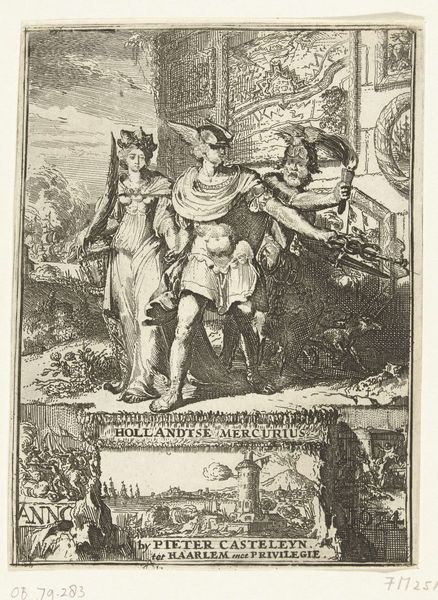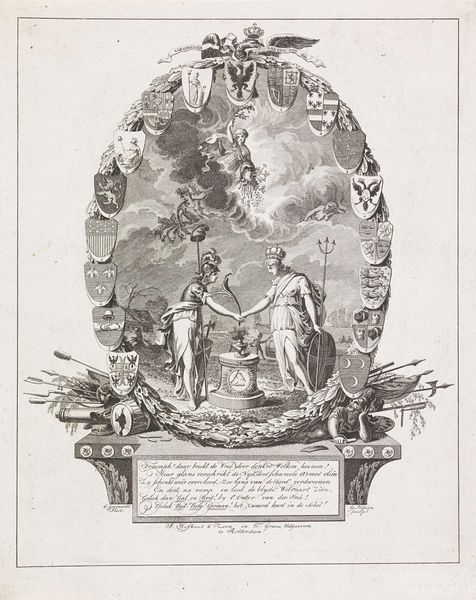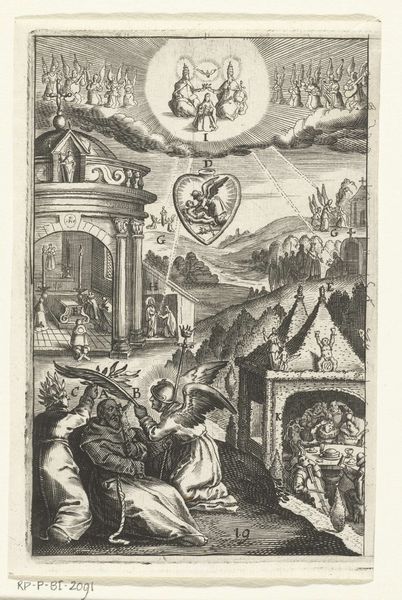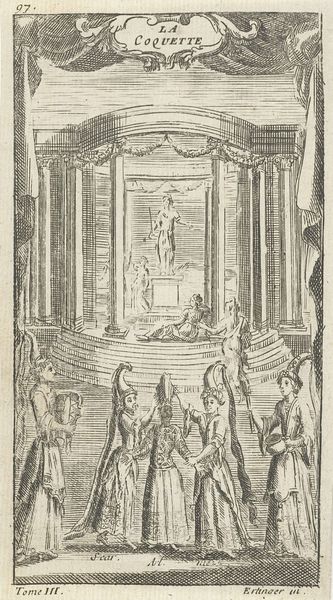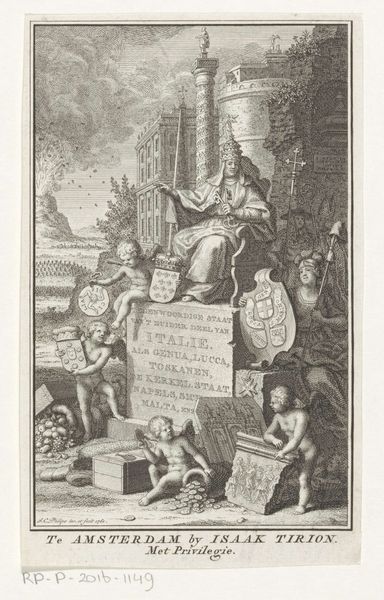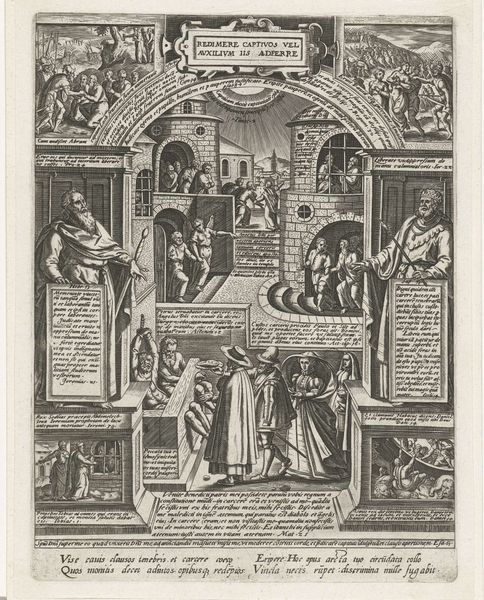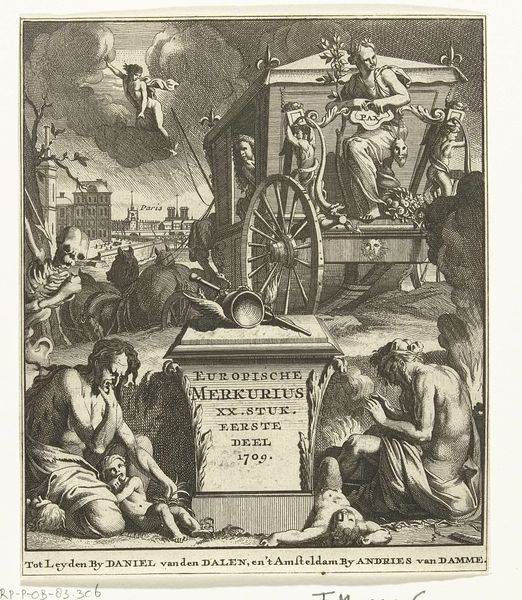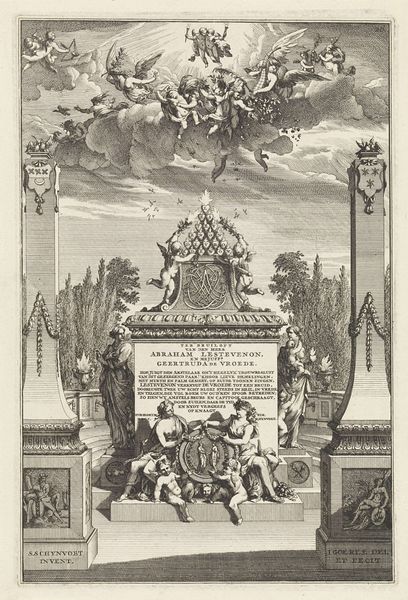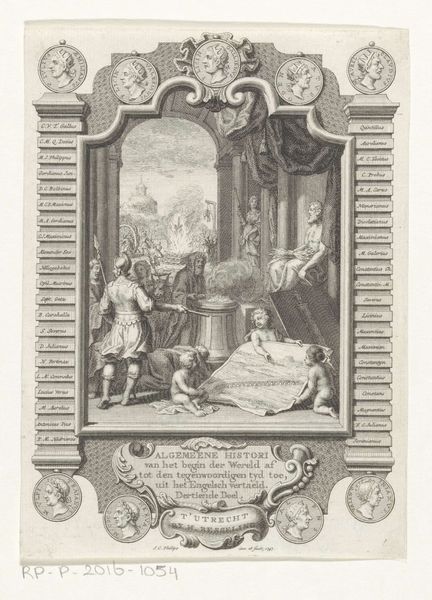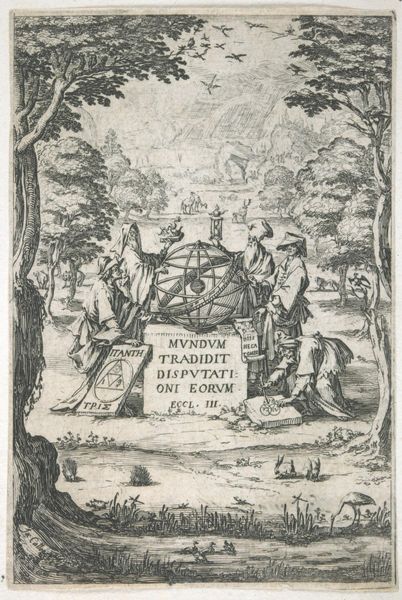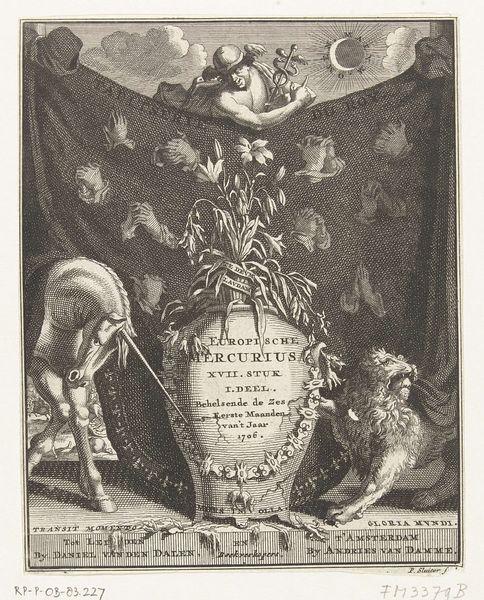
print, engraving
#
baroque
# print
#
figuration
#
line
#
history-painting
#
engraving
Dimensions: height 143 mm, width 83 mm
Copyright: Rijks Museum: Open Domain
This engraving depicts three Nehalennia altars found near Domburg. It’s an anonymous work that reflects the rediscovery of Nehalennia, a local goddess, whose worship peaked during the Roman period. This image captures a moment of cultural and religious revival, a reclamation of indigenous identity during a time of external influence. Nehalennia, often depicted with symbols of abundance and navigation, embodies the hopes and fears of a people deeply connected to the sea. The altars, with their Roman inscriptions, are poignant reminders of cultural assimilation and the enduring power of local beliefs. They show a blend of Roman and local traditions. Imagine the emotional weight of unearthing these sacred objects. The rediscovery was not just an archeological find; it was a deeply personal and communal experience, a tangible link to ancestors and a reaffirmation of cultural identity in the face of historical change. The engraving invites us to consider how societies negotiate the complexities of identity and heritage.
Comments
No comments
Be the first to comment and join the conversation on the ultimate creative platform.
